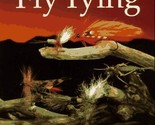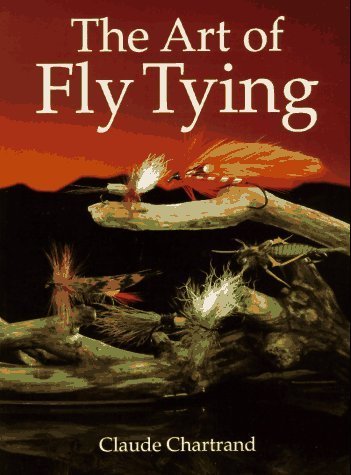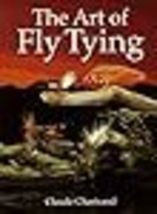Rendered at 03:42:17 08/05/25
The Art of Fly Tying by Claude Chartrand (1996-09-01) [Paperback] Claude Chartra
$79.19
Shipping options
Seller handling time is 2 business days Details
$3.99 via to United States
Return policy
Full refund available within 30 days
Purchase protection
Payment options
PayPal accepted
PayPal Credit accepted
Venmo accepted
PayPal, MasterCard, Visa, Discover, and American Express accepted
Maestro accepted
Amazon Pay accepted
Nuvei accepted
Shipping options
Seller handling time is 2 business days Details
$3.99 via to United States
Return policy
Full refund available within 30 days
Purchase protection
Payment options
PayPal accepted
PayPal Credit accepted
Venmo accepted
PayPal, MasterCard, Visa, Discover, and American Express accepted
Maestro accepted
Amazon Pay accepted
Nuvei accepted
Item traits
| Category: | |
|---|---|
| Quantity Available: |
Only one in stock, order soon |
| Condition: |
New |
| ASIN: |
B01K3MTHOY |
| binding: |
paperback |
| format: |
paperback |
| manufacturer: |
Firefly Books |
| author: |
Claude Chartrand |
| Subject Keyword: |
'tying', 'craft', 'art', 'fly' |
| Item Name: |
The Art of Fly Tying by Claude Chartrand (1996-09-01) |
| Product Site Launch Date: |
2017-07-26T15:32:02.708Z |
| Unspsc Code: |
55111505 |
| Product Description: |
Listing details
| Seller policies: | |
|---|---|
| Shipping discount: |
Free shipping on orders over $100.00 |
| Posted for sale: |
More than a week ago |
| Item number: |
1577133637 |
Item description
Additional Details
------------------------------
Product description: IntroductionNobody knows exactly when the first artificial fly was tied, although the art is most commonly believed to have originated in ancient Greece. The one certain thing, however, is that its major evolution began only in this century, perhaps even in the past few decades.The art and science behind the fly patterns of today come largely from the contributions of such great American fly tiers as Lee Wulff, Harry Darbee, Ernest Schwiebert, Charles K. Fox, Vince Marinaro, Art Flick, Poul Jorgensen, Doug Swisher and Carl Richards, to name only a few. Thus it was in the United States that many of the best-known creations of our time were developed. Among the many innovative and nontraditional dressings to emerge were streamers, hairwing dry flies, bass bugs, realistic nymphs, thorax flies and no-hackle flies.Increasing fishing pressure and the inevitable education of fish have contributed to the development of a new school of thought in fly tying. Attractor patterns succeeded in fooling naive fish in the time of our grandfathers, but today, more and more realistic imitations have emerged in response to these "educated," or selective, fish.The spirit of research has always been present among expert fly tiers, but now there is a growing -- in fact, mushrooming-grass-roots interest in learning the basic techniques. It is to assist the many beginners that we decided to put this book together and offer a work that attempts to address all aspects of the fascinating art of fly tying.WHY TIE YOUR OWN FLIES?A beginner's answer to this question might be that it is less expensive to tie flies than to buy them, but the apparent logic of that response will inevitably be questioned as he or she advances in the art. It's true that a fly you tie yourself is far less expensive than one you purchase, but it is easy to get carried away in the pleasure of fly tying, and you may discover after a few seasons that you have many times more flies than you'll ever need and certainly far more than you would have bought. So although you don't really save money, you will end up with far more flies for the money you do spend, and you'll find a great deal more enjoyment in using them.Imagine a beautiful, calm evening on your favorite lake. The trout are jumping everywhere, yet despite your expert selection of flies, you fail to attract even one half-hearted rise. You study the surface carefully and notice countless brownish gray insects barely a quarter of an inch long apparently imprisoned in the surface film. The trout lovethem. Even in the forgotten comers of your fly vest, you can find no reasonable imitation.If you're not a fly tier, you'll likely haunt your local fly shops the following week, vainly searching for a fly that looks just like those insects. But if you tie your own flies, you'll be ready the very next evening to offer the trout exactly what they are feeding on. And when you bring one of those selectively feeding trout to hand, you will, with good reason, get twice the satisfaction.
Added to your wish list!

- The Art of Fly Tying by Claude Chartrand (1996-09-01) [Paperback] Claude Chartra
- 1 in stock
- Handling time 2 days.
- Returns/refunds accepted
Get an item reminder
We'll email you a link to your item now and follow up with a single reminder (if you'd like one). That's it! No spam, no hassle.
Already have an account?
Log in and add this item to your wish list.





![The Art of Fly Tying by Claude Chartrand (1996-09-01) [Paperback] Claude Chartra Item image 2](https://images-bucket.bonanzastatic.com/afu/images/49a3/62f7/cee6_13566055636/51kt2adylxl._sl75_.jpg)
